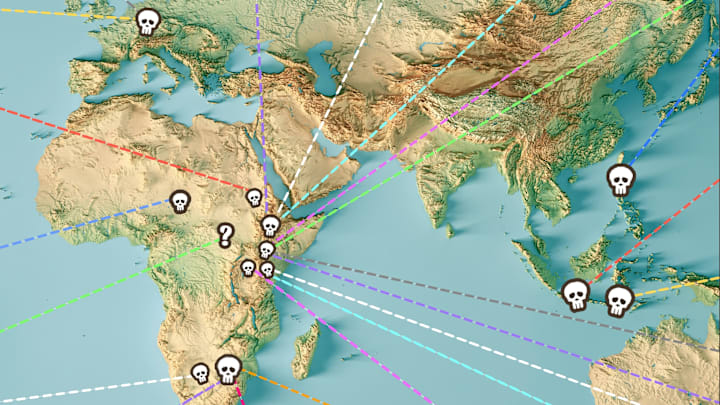Considering how long humans have been on Earth, it’s surprising that we have been scientifically studying our evolution for only 200 years. But in that short time, we’ve discovered about two dozen species of human ancestors in Europe, Africa, and Asia—which you can see mapped out in the infographic below.
The first known fossils of human ancestors, those of Neanderthals, were unearthed in the early 19th century, and decades passed before naturalists understood what they were looking at.
In the 20th century, the field of physical anthropology grew quickly and more breakthroughs were made, unlocking the mystery of our origins in eastern and southern Africa and establishing more branches of our hominin family tree. The serendipitous discoveries of the Taung Child’s cranium in 1924, the first evidence of the species Homo habilis at Olduvai Gorge in the 1960s, and Lucy’s 3-million-year-old bones demonstrating bipedalism in 1974 completely altered conceptions of our own species’ evolution.
The map shows species of several genera. The oldest are Sahelanthropus, Orrorin, and Ardipithecus, which are the most ape-like in anatomy. Fossils of Australopithecus, Kenyanthropus, and Paranthropus species show a mix of adaptations that have ape-like and human-like characteristics. The most recent genus, Homo, includes species that exhibit human-like traits.
We still know very little about the most recently documented hominin species. Homo naledi, described in the journal eLife in 2015, lived in what is now South Africa between 335,000 and 236,000 years ago and exhibited ape-like anatomical traits as well as a more human-sized brain. Homo floresiensis and Homo luzonensis, described in 2003 and 2019, respectively, emerged in Southeast Asia at least 60,000 years ago.

Today, with advanced technology like ancient DNA sequencing, hominin fossils are revealing stories that earlier generations of anthropologists never could have imagined. In 2010, scientists managed to sequence DNA from a few bone fragments from a Siberian cave and discover a completely new group of hominins, the Denisovans, through researchers are still not sure if they’re a distinct species or exactly how we’re related to them.
Discover More Amazing Facts About Hominins:
